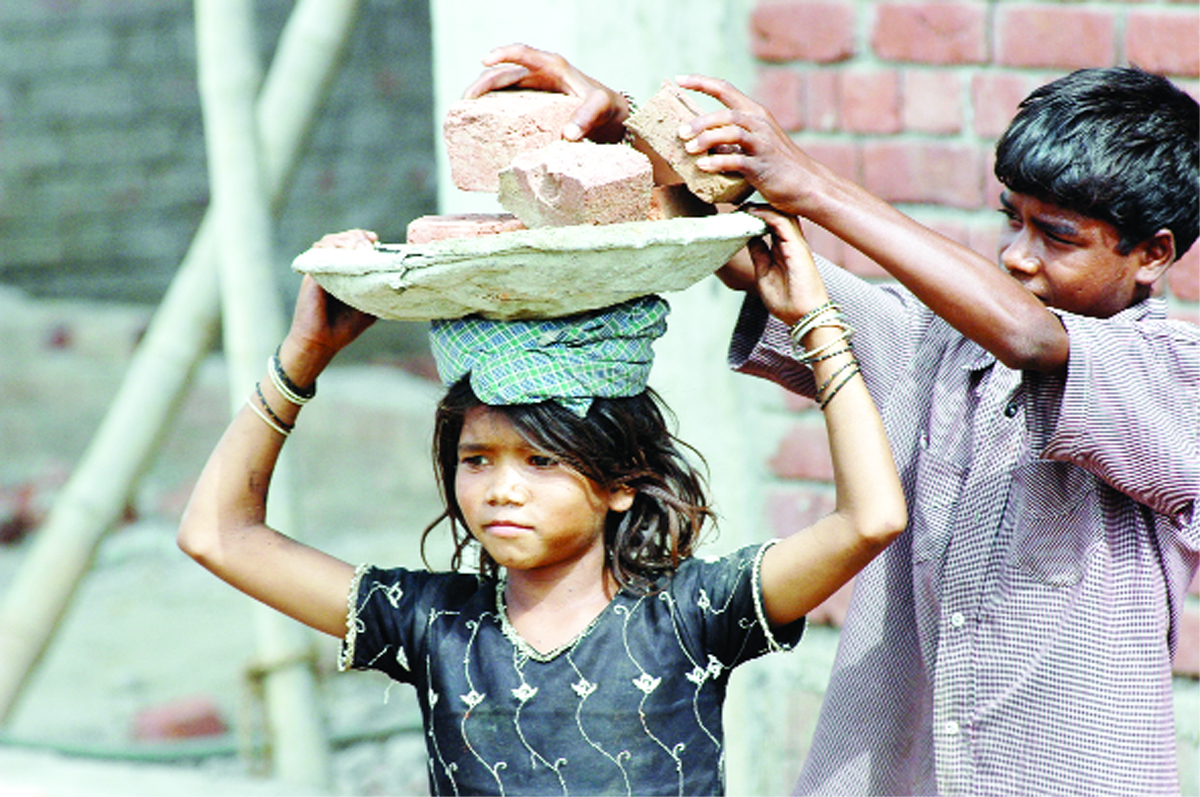Sharan Anuraj Tingloo
As defined by the UNICEF, child labour is work that exceeds a minimum number of hours depending on the age of a child and on the type of work. It involves the work that is mentally, physically, socially or morally dangerous and harmful to children, and interferes with their schooling by depriving them of the opportunity to attend school, obliging them to leave school prematurely, or requiring them to attempt to combine school attendance with excessively congress and heavy work. Child labour is a combined product of many factors, such as poverty, social norms condoning it, lack of decent work opportunities for adults and adolescents, migration, and emergencies.
The World Day Against Child Labour is observed on 12 June every year. It is observed by the International Labour Organi-zation, an agency under the United Nations, to combat child labour throughout the world. It was launched by the International Labour Organization, a UN body in 2002 to focus attention on the global extent of child labour and the action and efforts needed to eliminate it.
The International Labour Organization estimates that about 168 million. This day aims to combat this phenomenon which affects the children worldwide.
Child labour is surging in Jammu and Kashmir despite laws. According to different reports on child labour in J&K, there are more than 1 lakh child labourers in the state, majority of who work in the handicrafts sector, automobile workshops, brick kilns, agriculture and as domestic servants in homes. A professor of Sociology in Kashmir University said that if the Government says that the child who does the labour by his own choice and is not subjected for the work is not a child labour, and if this order is to be believed then there is not even a single case of child labour. The children are converted into machines to work and earn money to sustain their families. When at such a tender age they are made to work, that deprives children of their childhood, their potential and their dignity, and that is harmful for their physical and mental development. The worst form of child labour includes being enslaved, separated from families, exposed to serious hazards, illness and/or left to fend themselves on the streets of large cities.
The State Governments, which are the appropriate implementing authorities, have been conducting regular inspections and raids to detect cases of violations.
The 25 years of violence in Jammu and Kashmir have increased child labour. Thous-ands of the children workers have lost their parents and guardians in the conflict. In the absence of a family bread winner, these children were forced to work in order to support their families. They are made to work in Centrally sponsored schemes, like MNREGA in Jammu and Kashmir. Experts believe that unlike other states of India, there are no good NGOs in J&K which can raise their voice against child labour. There are many organizations working for child rights in Kashmir, but the ground level work is zero. Although the Department of Labour and Employment claims that every month they conduct inspections in all districts to see children working as labourers and come across violation of such laws, but almost in all cases they come with proofs showing that the children are above 14 years and in this way they dodge the laws. Government has been taking various pro-active measures to tackle this problem. However, considering the magnitude and extent of the problem and that it is essentially a socio-economic problem inextricably linked to poverty and illiteracy, it requires concerted efforts from all sections of the society to make a dent in the problem.
Child labour is preventable, not inevitable, and the number of children engaged in child labour has declined by one-third since 2000. UNICEF works with governments, business, communities and civil societies to strengthen education and child protection systems to improve access to quality of education and eliminate child labour. Just like it is said that “cut it at the roots”, ultimately, we need to tackle the problem at its source.
feedbackexcelsior@gmail.com
Trending Now
E-Paper


